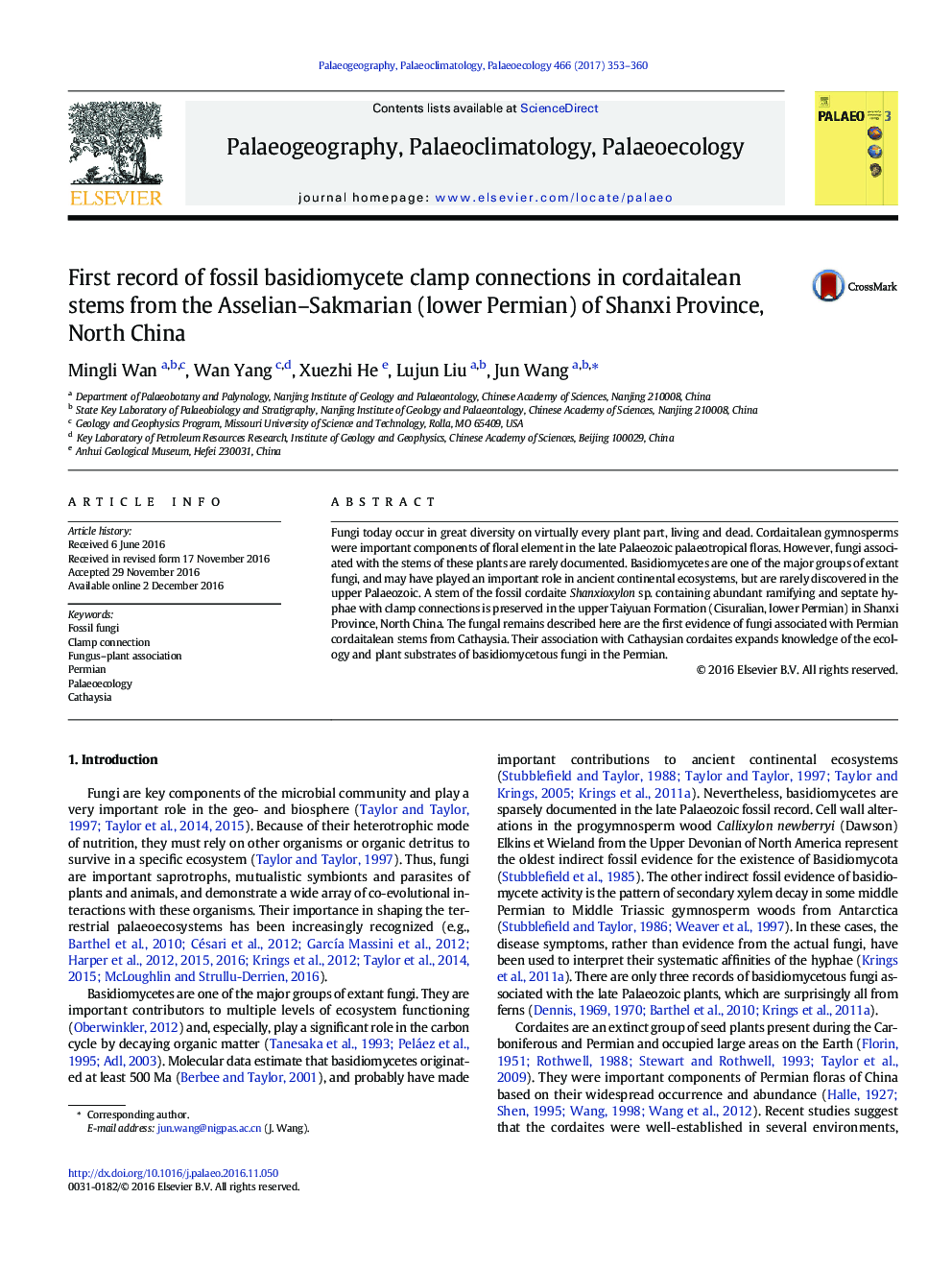| Article ID | Journal | Published Year | Pages | File Type |
|---|---|---|---|---|
| 5756043 | Palaeogeography, Palaeoclimatology, Palaeoecology | 2017 | 8 Pages |
â¢Clamp-bearing hyphae are firstly recorded from the late Palaeozoic of Cathaysia.â¢Basidiomycetes associating with cordaite stem are firstly found in the Permian.â¢It expands the knowledge of Permian basidiomycetous diversity and their host.
Fungi today occur in great diversity on virtually every plant part, living and dead. Cordaitalean gymnosperms were important components of floral element in the late Palaeozoic palaeotropical floras. However, fungi associated with the stems of these plants are rarely documented. Basidiomycetes are one of the major groups of extant fungi, and may have played an important role in ancient continental ecosystems, but are rarely discovered in the upper Palaeozoic. A stem of the fossil cordaite Shanxioxylon sp. containing abundant ramifying and septate hyphae with clamp connections is preserved in the upper Taiyuan Formation (Cisuralian, lower Permian) in Shanxi Province, North China. The fungal remains described here are the first evidence of fungi associated with Permian cordaitalean stems from Cathaysia. Their association with Cathaysian cordaites expands knowledge of the ecology and plant substrates of basidiomycetous fungi in the Permian.
